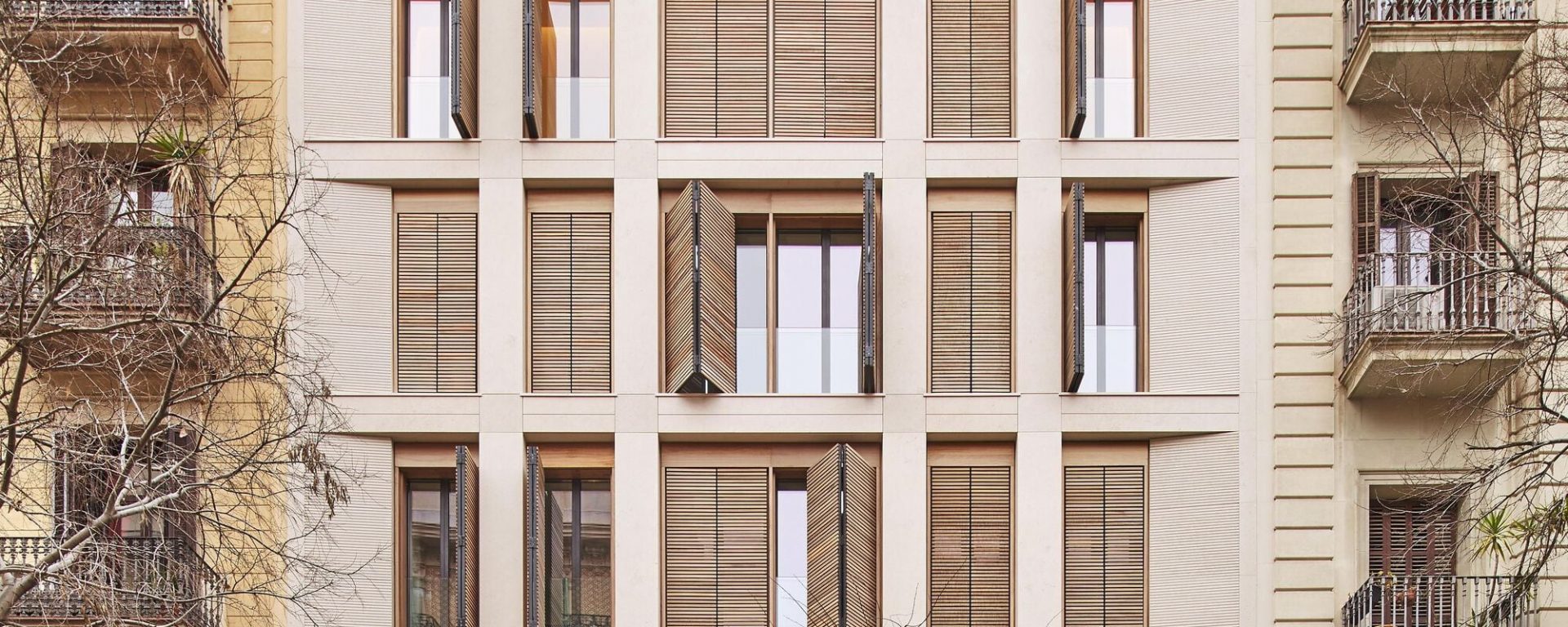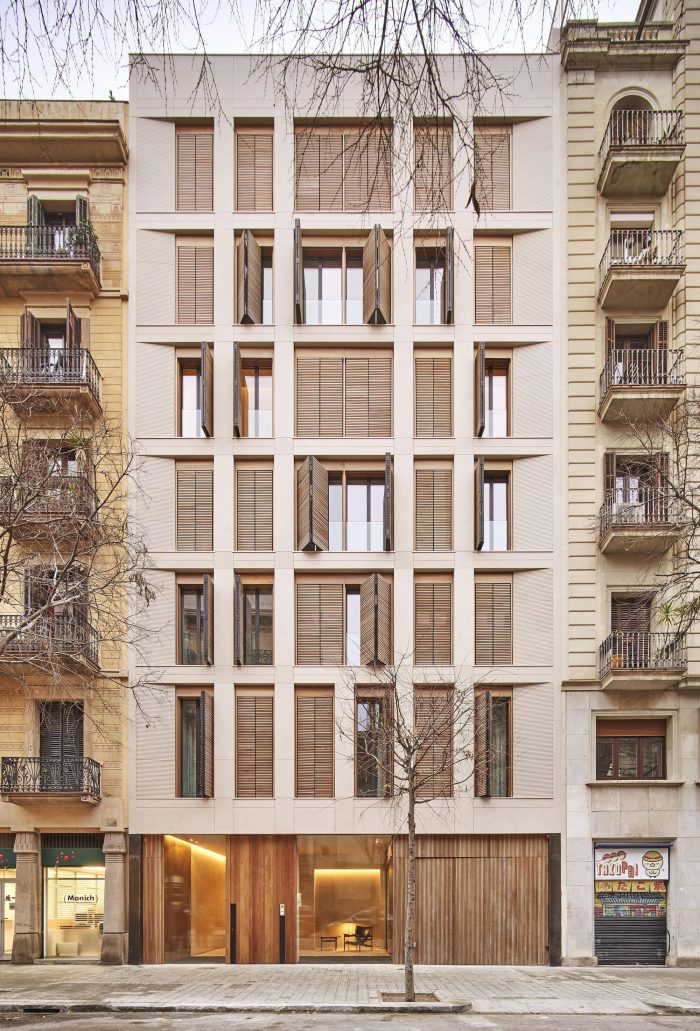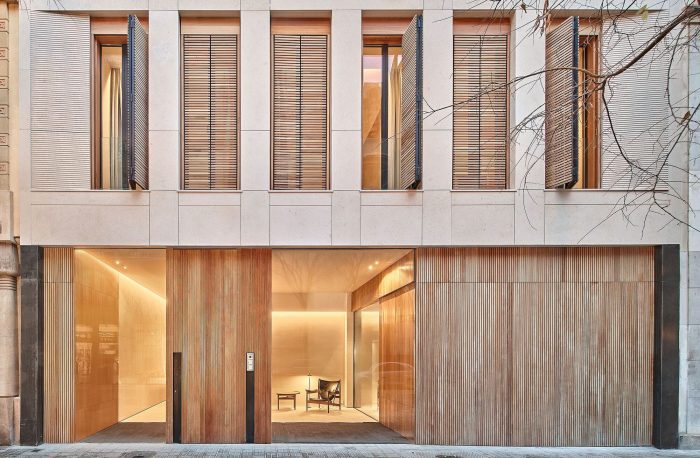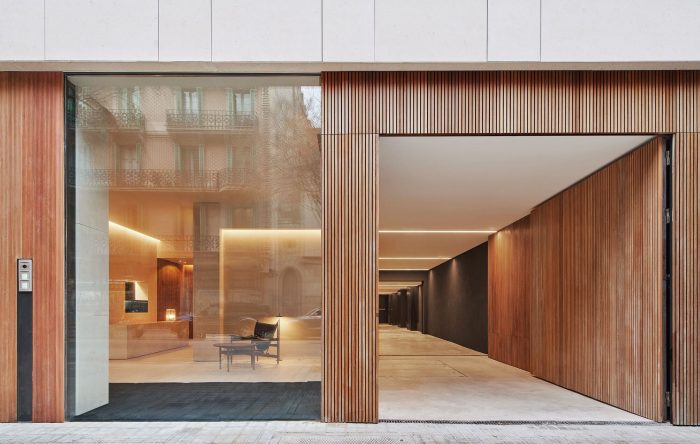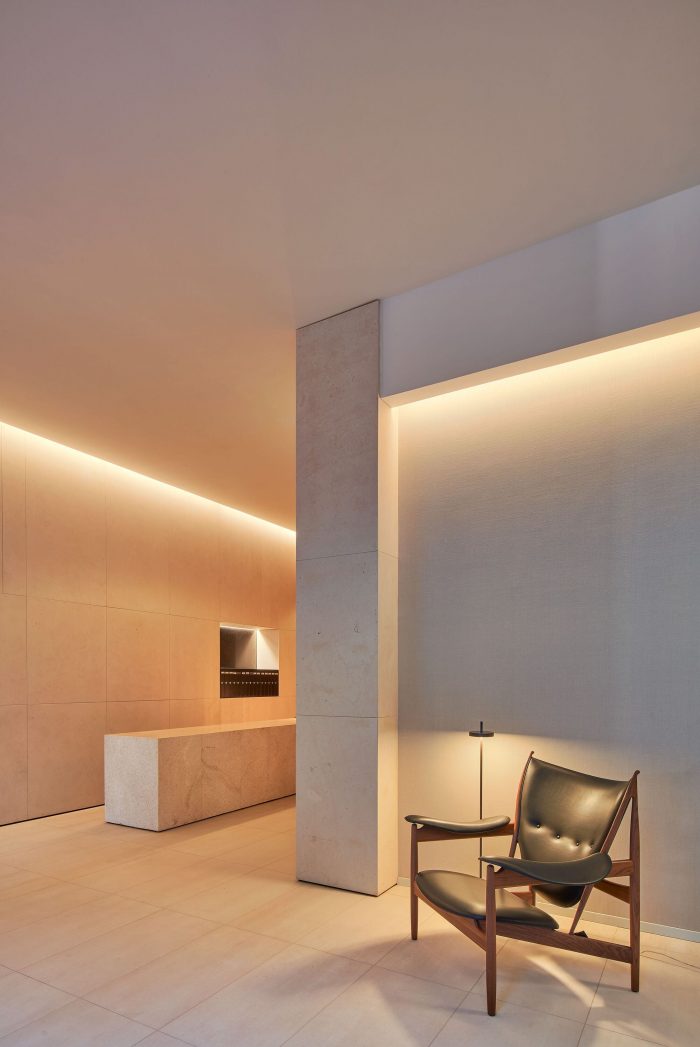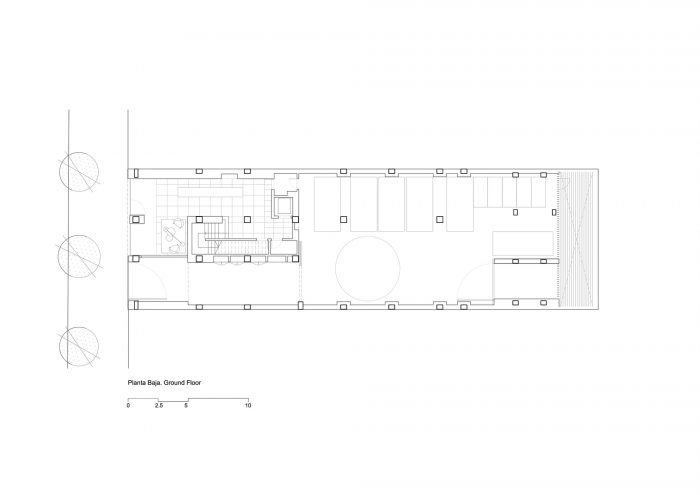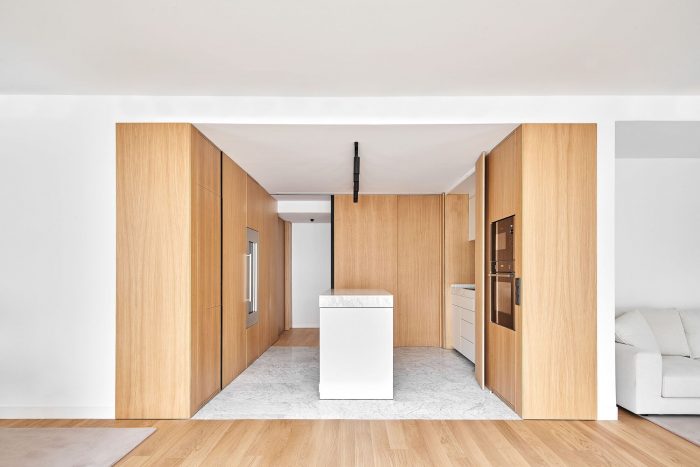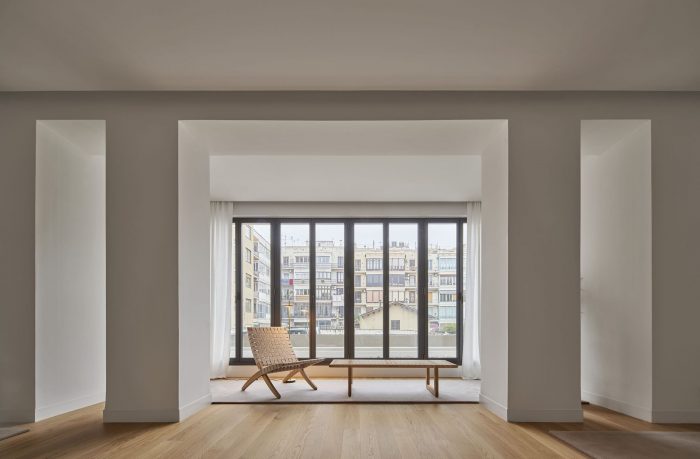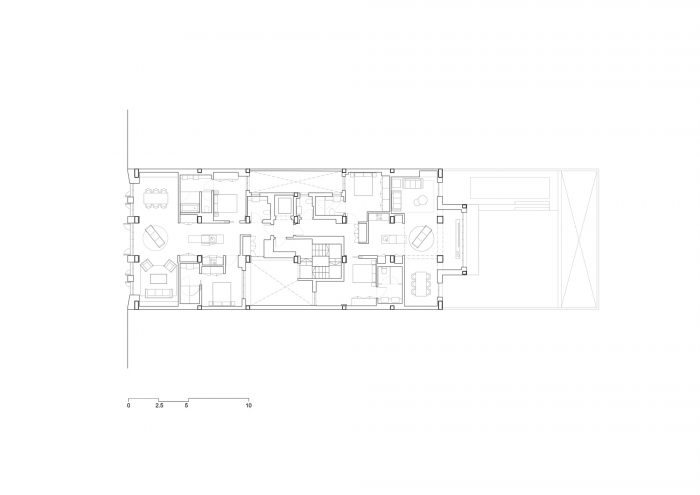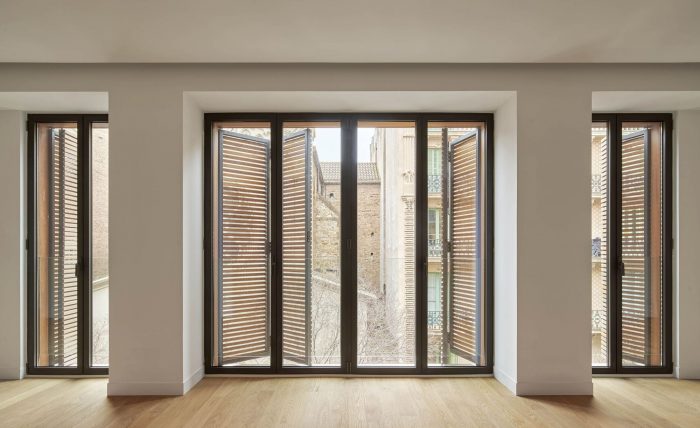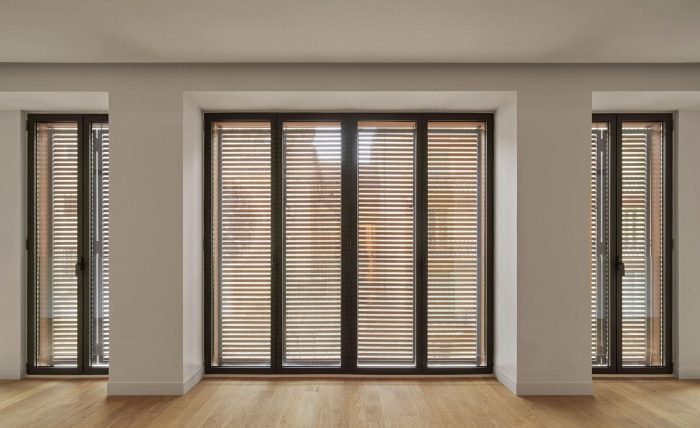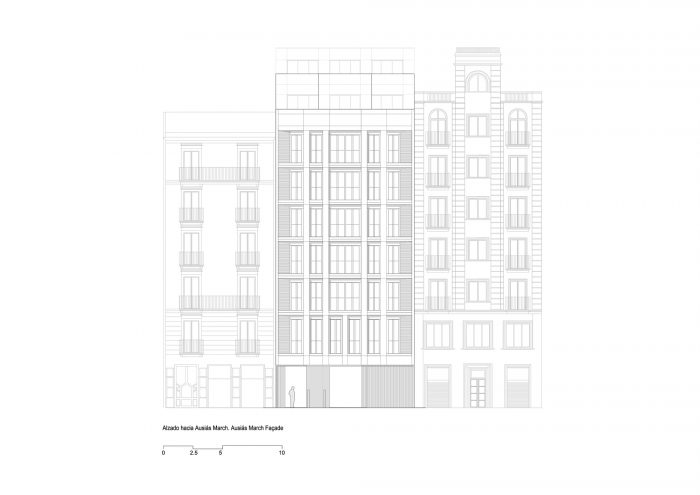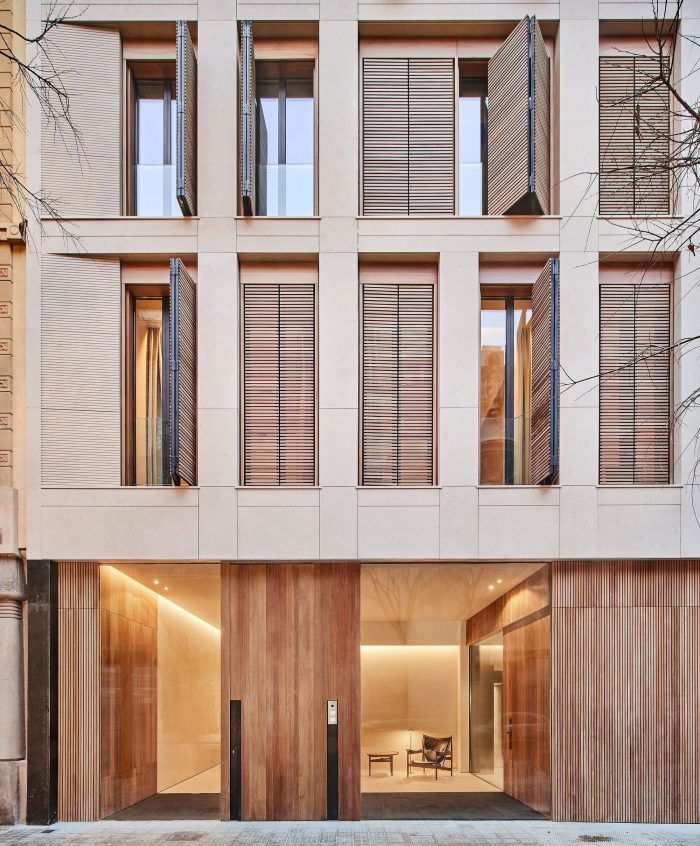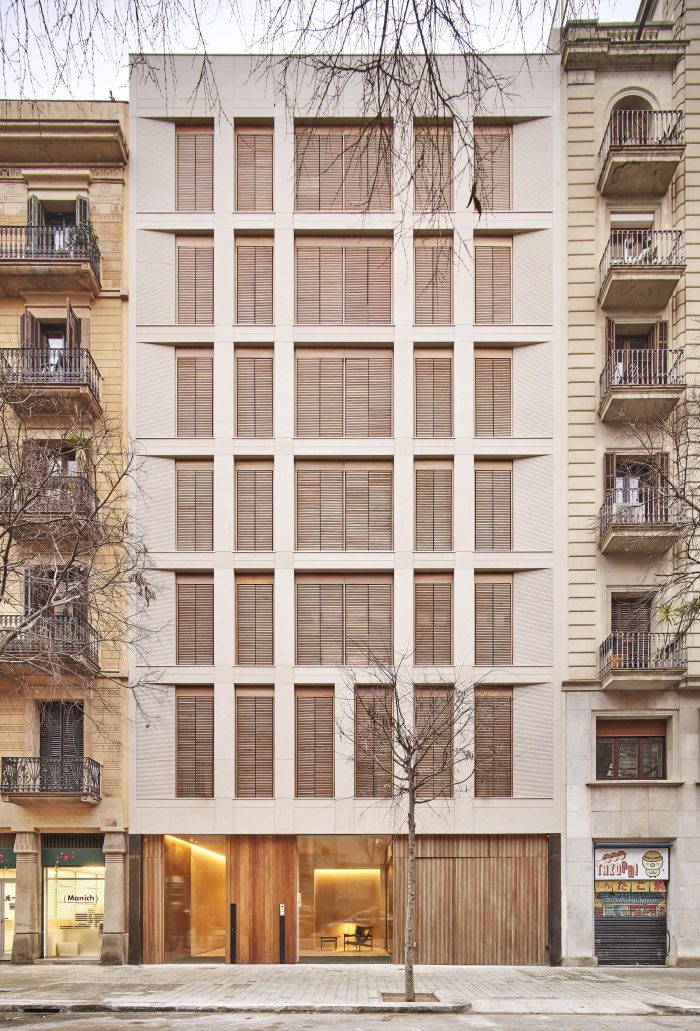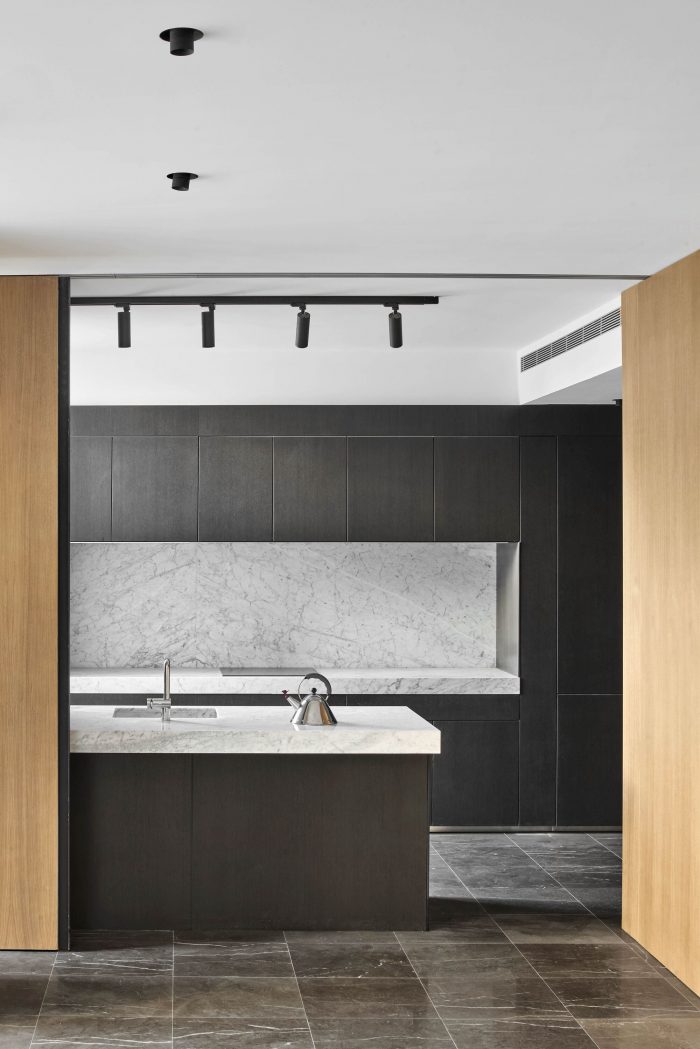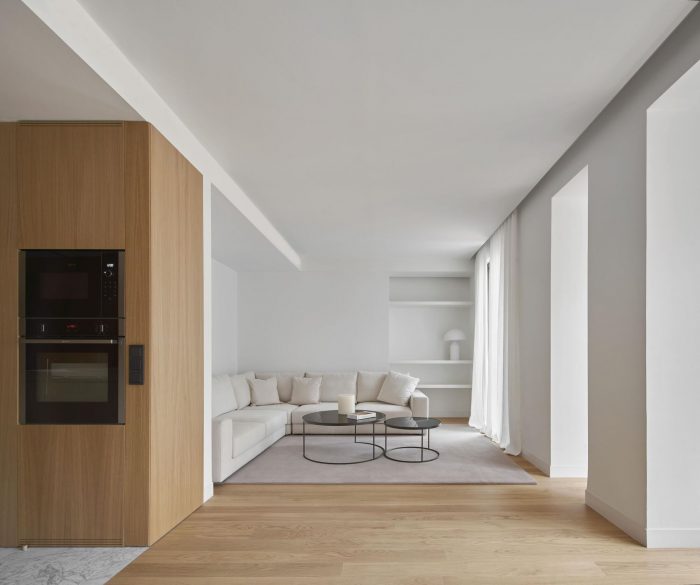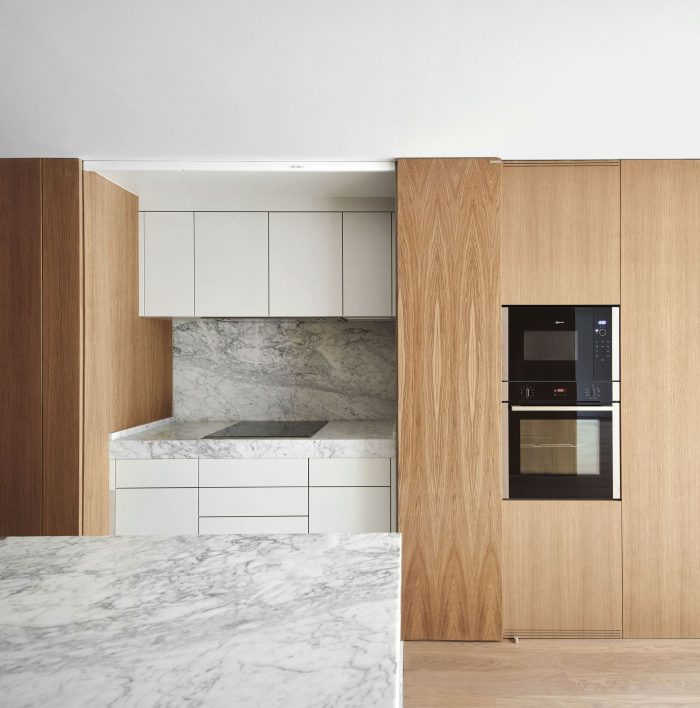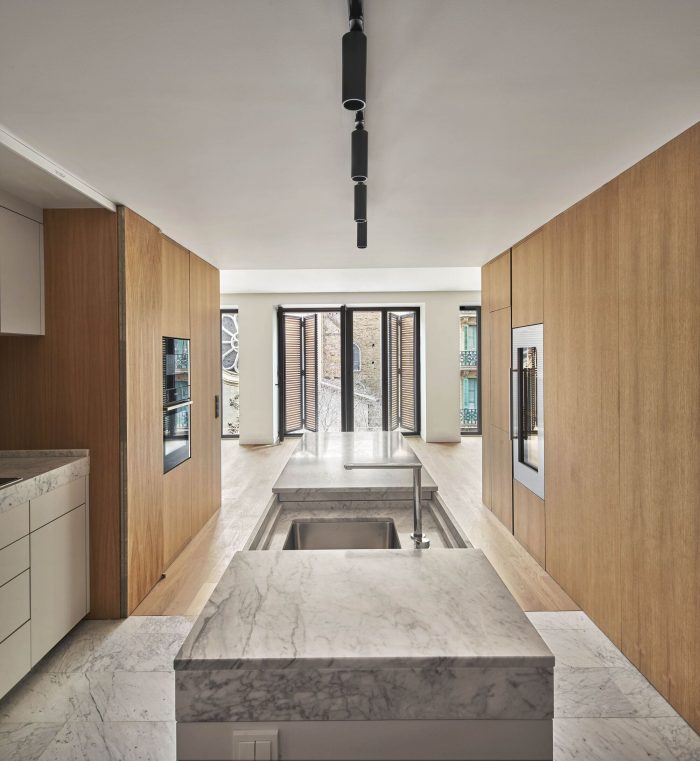干预的目的是将一栋结构和立面与20世纪60年代一致的办公大楼改造成一栋布局符合现代生活新要求的多功能住房。该项目重新设计了建筑的外壳,通过一个向光线致敬的立面,与Eixample的古典建筑创造了对话。该建筑产生了一个完整和空旷的空间组成,并与环境调节因素,如防晒和交叉通风,进行了博弈。
The aim of the intervention was to adapt an office building, with a structure and façade consistent with the 1960s, to a multiple housing building with a layout that responds to the new demands of modern living. The project redesigns the building’s envelope, creating a dialogue with the classical architecture of the Eixample, through a façade that is a tribute to light. The building generates a composition of full and empty spaces and plays with environmental conditioning factors such as solar protection and cross ventilation.
在构成上,该项目提议重新配置建筑的中央空间,以产生一个新的垂直通信核心和一个新的庭院,每层创造两个住宅。所有的公共区域,宽敞和阳光充足,都朝向外墙,朝向Carrer de Ausiàs March,或朝向街区的内院。更多的私人空间向新的中央庭院开放,在所有的住宅中产生交叉通风。通过这种方式,该建筑避免了典型的阴暗通道类型。
Compositionally, the project proposes the reconfiguration of the central space of the building to generate a new vertical communications core and a new courtyard, creating two dwellings per floor. All the public areas, spacious and sunny, are turned towards the façades, to Carrer de Ausiàs March, or to the inner courtyard of the block. The more private spaces open onto the new central courtyard, generating cross ventilation in all the dwellings. In this way, the building avoids the typical shady passageway typology.
住宅的分布围绕着一个容纳厨房设备的中心元素,由于家具的设计策略,它被隐藏起来,变成了一个多功能的空间,可以作为一个会议点,一个工作空间,或者仅仅作为一个分配大厅。住宅中的大多数公共空间,如客厅和餐厅,占据了整个外墙的长度,充分利用了自然光。在暴露在东南方向的主立面上,木制百叶窗使室内外之间的关系变得动态,产生了暗示性的光与影的相互作用,并确保了房间的隐私和太阳能保护。
The distribution of the dwellings revolves around a central element that houses the kitchen equipment, which is concealed thanks to the design strategy of the furniture, transforming it into a versatile space that can function as a meeting point, a workspace, or simply as a distribution hall. Most public spaces in the home, such as the living and dining rooms, occupy the entire length of the façades, making the most of natural light. On the main façade, exposed to the southeast, wooden shutters allow dynamic relations between the interior and exterior, generating suggestive interplay of light and shadow as well as ensuring privacy and solar protection of the rooms.
石材和木材是用于包层和地板的两种材料,构成了整个项目的指导思想。在住宅的内部,使用了橡木和白色卡拉拉大理石,寻求一种色彩和敏感的平衡,加强了整体设计的清醒。
Stone and wood are the two materials used in both cladding and flooring and constitute the guiding thread of the entire project. In the interiors of the homes, oak wood and white Carrara marble have been used, seeking a chromatic and sensitive balance that reinforces the sobriety of the overall design.
石材的双重性贯穿整个项目,无论是在住宅和公共区域,还是在围护结构。外立面的表现力是所采用的材料和构图逻辑的产物,石灰石和木材与周围建筑的包层和色调进行对话。质量和空隙的组成和比例、纹理、材料和木质百叶窗的垂直设计是对室内分布作出诚实反应的设计工具。该项目使用了现代生活的技术,同时以一种优雅、永恒和清醒的方式融入周围的建筑中。
The stone-wood duality runs throughout the project, both in the homes and communal areas, as well as in the envelope. The expressiveness of the façade is the product of the material and compositional logic employed, where limestone and wood dialogue with the cladding and tones of the surrounding buildings. The composition and proportion of mass and void, the textures, the materials, and the vertical design of the wooden shutters are the design instruments that provide an honest response to the interior distribution. The project uses the technologies of modern living and at the same time integrates into the surrounding buildings in an elegant, timeless, and sober way.
Architects: GCA Architects
Area : 269108 ft²
Year : 2022
Photographs :José Hevia
Manufacturers : Bulthaup, Carl Hansen, Cortizo, ICONICO, Oluce, Oty Light, Santa & Cole, thyssenkrupp, Alessi, Finn Juhl – Minim, Fustería del Cardoner, Karakter – Minim, Marmogil, Max Enrich, PARKESTIL, Roca
Lead Architect : Lluis Guillem
Team : Andrea Navarro Golobart, Marta Visa
Clients : Arc Homes
Builder : Byco / Constructora del Cardoner
Quantity Surveyor : GCA Architects
Structural Engineering : Nolac Enginyers, S.A.
Mep Engineering : PGI Engineering & Consulting
City : Barcelona
Country : Spain

